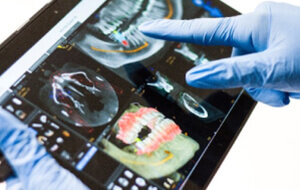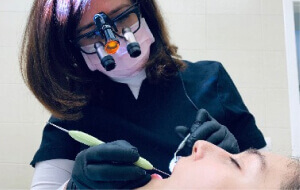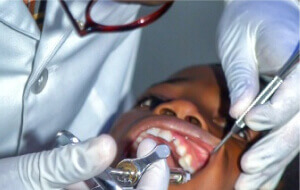Services
Transforming Patient Care Through Remote Monitoring
Empowering Patients, Reducing Costs, Changing Lives
At Community Wellness, we are at the forefront of integrating advanced remote patient monitoring (RPM) technologies into patient care. Our innovative approach is not just about embracing new technology; it’s about fundamentally enhancing the quality of life for our patients.
Key Statistics & Impacts
Improved Clinical Outcomes
Studies show RPM improves adherence to medical therapies, enhancing outcomes in heart failure and diabetes management, improving patient quality of life.
Reduction in Healthcare Costs
RPM significantly reduces care costs by 51% and lowers emergency visits and ambulance rides by 18% and 63%, respectively.
Increasing Adoption and Satisfaction
With 80% of Americans favoring RPM and over 90% patient satisfaction reported, its integration into medical care is increasingly preferred.
Financial Scalability and Accessibility
By 2024, RPM services are projected to reach 30 million U.S. patients, supported by Medicare's $120 reimbursement per patient monthly.
Broad-Scale Benefits
Telemonitoring enhances patient care through digital data, enabling early disease detection, education, and stronger patient-physician relationships, with 65%-70% willing to participate.
01
Comprehensive Dental Exams
Embark on a journey to optimal oral health with our Comprehensive Dental Exams. At Dr. Smith’s Dental Care, our meticulous approach ensures a thorough assessment of your dental well-being. Through detailed examinations, we delve into the intricacies of your oral health, detecting potential issues before they escalate. Our skilled team, led by Dr. Smith, combines advanced diagnostics with a commitment to personalized care. From assessing gum health to identifying potential decay, our comprehensive exams pave the way for proactive and preventive dental solutions.

02
Cosmetic Dentistry for a Radiant Smile
Elevate your confidence and transform your smile with our Cosmetic Dentistry services at Dr. Smith’s Dental Care. Dr. Smith, renowned for her artistic touch, crafts personalized solutions to enhance your natural beauty. From professional teeth whitening to porcelain veneers and complete smile makeovers, we tailor treatments to your unique needs. Our commitment extends beyond aesthetics; we prioritize functionality and oral health in every procedure. Uncover the potential of your radiant smile with modern techniques and a dedicated team.

03
Precision Restorative Dentistry
Experience the art and precision of restorative dentistry at Dr. Smith’s Dental Care. Our skilled team, led by Dr. Smith, specializes in crafting customized solutions to repair and strengthen your teeth. From seamless fillings to expertly designed crowns, our approach goes beyond aesthetics, prioritizing both form and function. Using state-of-the-art techniques, we restore your smile with meticulous detail, ensuring a natural and lasting outcome. Trust in our commitment to precision, and rediscover the joy of a healthy, functional, and aesthetically pleasing smile.

04
Orthodontic Solutions for a Straighter Smile
Embark on a journey to a straighter, more confident smile with our Orthodontic Solutions at Dr. Smith’s Dental Care. Led by Dr. Smith, our expert team offers personalized orthodontic treatments tailored to your unique needs. From traditional braces to modern clear aligners, we provide effective solutions for alignment issues. Our approach goes beyond aesthetics, focusing on improving overall oral health and functionality. With advanced techniques and compassionate care, we guide you through the process of achieving a well-aligned and radiant smile.

05
Paediatric Dentistry for Growing Smiles
Nurture your child’s oral health with our specialized Pediatric Dentistry services at Dr. Smith’s Dental Care. Dr. Smith and our caring team create a kid-friendly environment, ensuring positive and stress-free dental experiences for our youngest patients. From gentle cleanings to addressing specific pediatric dental needs, we prioritize the unique requirements of growing smiles. Trust Dr. Smith’s expertise in pediatric care, providing your child with the foundation for a lifetime of optimal oral health. Choose Pediatric Dentistry at Dr. Smith’s Dental Care for smiles that grow with confidence.

06
Dental Implants for Lasting Solutions
Dr. Smith and our skilled team specialize in providing durable and natural-looking implants, restoring both function and aesthetics. Whether you need a single-tooth replacement or a full set of implants, our personalized approach ensures a long-lasting solution. Implants not only enhance your smile but also promote oral health by preserving jaw bone density. Trust Dr. Smith’s expertise in dental implantology to rejuvenate your smile, offering a permanent and confident solution for a lifetime. Choose Dental Implants at Dr. Smith’s Dental Care for lasting dental excellence.

Community Wellness
Community Wellness supports Seniors over 65+ navigating challenges such as Medicare, insurance, and staying healthy and provides a strategic road map for Living Better, Living Longer, and Living at home.
- We provide a road map for seniors to navigate difficult issues after age 65
- Digital Healthcare for individuals over 65
- We help individuals over 65 Live Better, Live Longer, and Live at Home
- Easily manage Mediations, for both patient and provider
- Hospital to Home program ensures safe transitioning to Living at Home
- Holistic healthcare - simplified
Let’s take your transitional care to the next level.
Fill out this form for more information or to set up a detailed demo.
- Hello@CommunityWellness.com
- (352) 282-0628
- Campbell, CA 95008